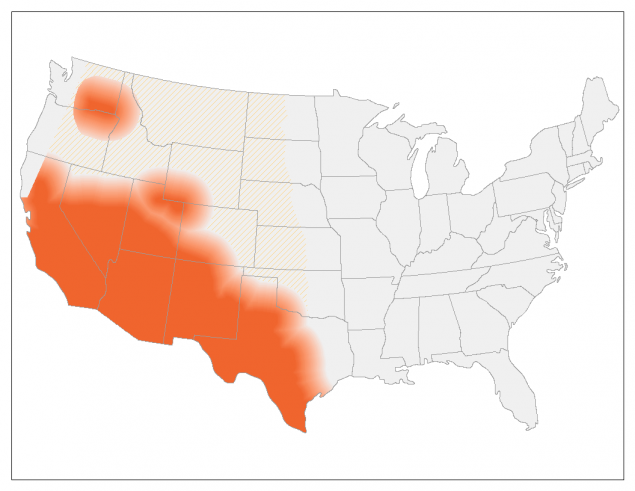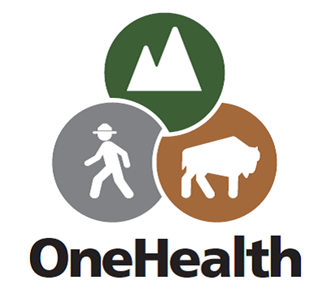Last updated: April 20, 2023
Article
Coccidioidomycosis (Valley Fever)

Centers for Disease Control and Prevention
https://www.cdc.gov/fungal/pdf/more-information-about-fungal-maps-508.pdf
THE BASICS
Humans: Valley fever, also called coccidioidomycosis, is an infection caused by the fungus Coccidioides, which is found in soil throughout the southwestern United States. The fungus produces microscopic spores, which can become airborne when soil is disturbed. Some people who breathe in the spores from the air may become ill, though most people don’t. If someone does become ill, symptoms usually appear between 1 and 3 weeks after a person breathes in the fungal spores. Symptoms of Valley fever include fatigue, cough, fever, shortness of breath, headache, night sweats, muscle aches or joint pain, and a rash on the upper body or legs. In very rare cases, the fungal spores can enter the skin through a cut, wound, or splint and cause a skin infection. Approximately 5 to 10% of people who get Valley fever will develop serious or long-term lung problems. In rare cases, the infection can spread from the lungs to other parts of the body. People who become ill with Valley fever usually recover on their own in weeks to months, but some people need antifungal medication to recover fully. Valley fever rarely spreads from one person to another. There is currently no vaccine to prevent Valley fever.Certain groups of people (including those people who have weakened immune systems or diabetes, people who are pregnant, and people who are Black or Filipino) are at higher risk for becoming severely ill.
Animals: Although both domestic and wild animals can be infected by Valley fever, the fungus is not transmitted between animals and people. As in humans, most animals exposed to spores do not become ill. Early clinical signs in dogs include coughing, fever, weight loss, and lethargy, and the infection can become disseminated and result in lameness if the fungus gets into the bones. Infected cats most often have non-healing skin lesions that may appear like an abscess. However, cats can also have other signs of disease, such as respiratory abnormalities, lameness, and unexplained weight loss.
Environment: The fungus that causes Valley fever lives in the soil throughout the southwestern United States and was recently found in south-central Washington. Outside of the United States, Coccidioides has been found in parts of Mexico, Central and South America. Climate change may widen the geographical distribution of Coccidioides, but the exact distributional changes are difficult to predict. Furthermore, climate change is predicted to cause drier, windier environments, whose impact on fungal spore formation is not yet clear. It is known that drier, windier environments are associated with an increased risk of transmission in areas where fungal spores already exist.
PREVENTION
- Try to avoid activities which would cause you to breathe in large amounts of dust.
- If activities cannot be avoided, try to minimize the amount of dust that is breathed in, such as by stopping work in dust storms or high winds, continuously wetting soil while digging or moving earth, and staying upwind of digging when possible.
- If you can’t avoid dusty areas (like construction or excavation sites) or activities, contact your safety officer about wearing an N95 respirator.
- Stay inside during dust storms and close your windows.
- Consider implementing air filtration measures indoors
- Clean skin injuries well with soap and water to reduce the chances of developing a skin infection, especially if the skin was exposed to dirt and dust.
- If you develop symptoms of Valley fever and live or have traveled to an area where the fungus is present, contact your healthcare provider and let them know your concerns. They can prescribe anti-fungal medications if necessary.
- Please report any confirmed illnesses to the NPS Office of Public Health (e-mail us) as directed in the “Disease Reporting” guidance below.
- Report concerns about sick or dead wildlife to the park resource manager and the Wildlife Health Branch (e-mail us)

- CDC Valley Fever Website
- NIOSH Occupational Valley Fever Prevention Website
- Valley Fever Center for Excellence (University of Arizona)
- Petersen LR, Marshall SL, Barton C, et al. Coccidioidomycosis among Workers at an Archeological Site, Northeastern Utah. Emerg Infect Dis. 2004;10(4):637-642. doi:10.3201/eid1004.030446
- Centers for Disease Control and Prevention (CDC). Coccidioidomycosis in workers at an archeologic site--Dinosaur National Monument, Utah, June-July 2001. MMWR Morb Mortal Wkly Rep. 2001;50(45):1005-1008.
- Perera P, Stone S. Coccidioidomycosis in workers at an archeologic site-Dinosaur National Monument, Utah, June-July 2001. Ann Emerg Med. 2002;39(5):566-569. doi:10.1067/mem.2002.123550
